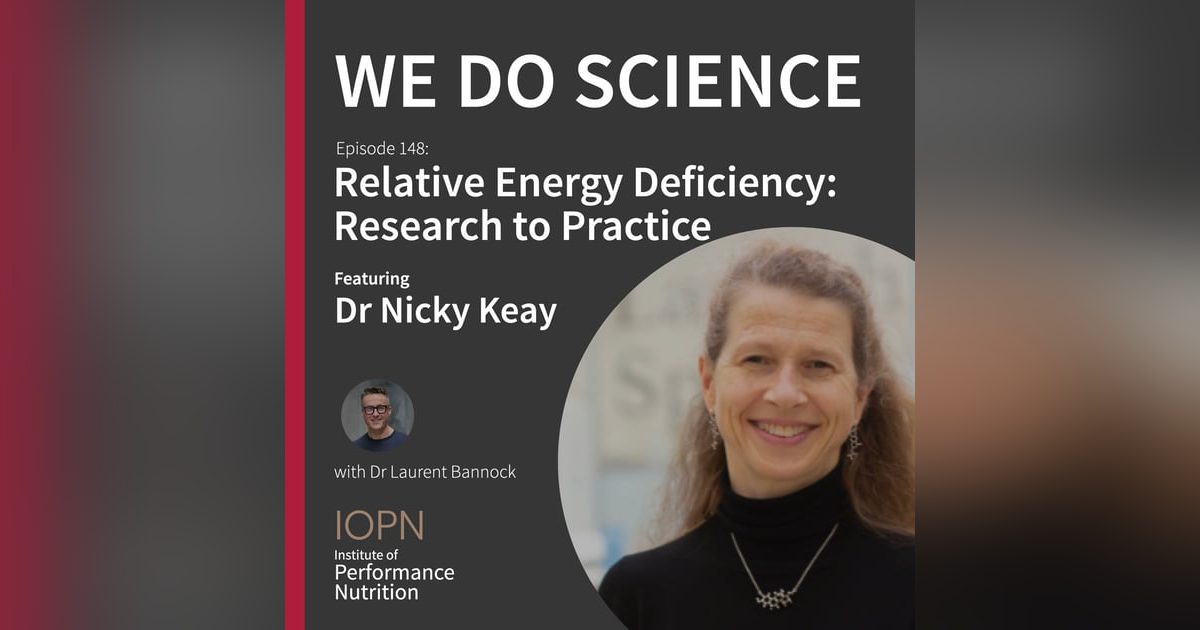Nov. 13, 2020
"Relative Energy Deficiency: Research to Practice" with Dr Nicky Keay

Episode 148 of the Institute of Performance Nutrition's "We Do Science" podcast! In this episode, I (Laurent Bannock) discuss "Relative Energy Deficiency: Research to Practice" with Dr Nicky Keay BA, MA (Cantab), MB BChir, MRCP (Honorary Fellow, Department of Sport and Exercise Sciences, Durham University, UK).
Discussion Topics Include:
- Relative Energy Deficiency: an overview and background to RED-s
- Energy availability and impact on health and performance
- Recognising relative energy deficiency: from the research lab to "real world" practice
- RED-s as an issue in female and male athletes, dancers etc
- Dr Keay's recent research on cyclists and dancers
Podcast Episode Transcript: Download PDF Copy
Key Paper(s) Discussed / Referred to:
- Infographic. Energy availability: concept, control and consequences in relative energy deficiency in sport (RED-S) - Keay, Francis BJSM 2019
- Awareness and indicators of low energy availability in male and female dancers - Keay, Francis, AusDancersOverseas MedRxiv preprint
- Low energy availability assessed by a sport-specific questionnaire and clinical interview indicative of bone health, endocrine profile and cycling performance in competitive male cyclists - Keay, Francis, Hind BMJ Open Sports and Exercise Medicine 2018
- Health4Performance - BASEM Educational Resource
Related Podcast Episodes:
- #136 - "Energy Availability: From Health to Performance" with Jose Areta PhD
- #132 - "Nutrition and Athlete Bone Health" with Prof Craig Sale and Dr Kirsty Elliot-Sale
- #106 - "The Female Athlete" with Dr Kirsty Elliot-Sale
Check out our other podcasts, publications, events, and professional education programs for current and aspiring sports nutritionists at www.TheIOPN.com and follow our social media outputs via @TheIOPN







